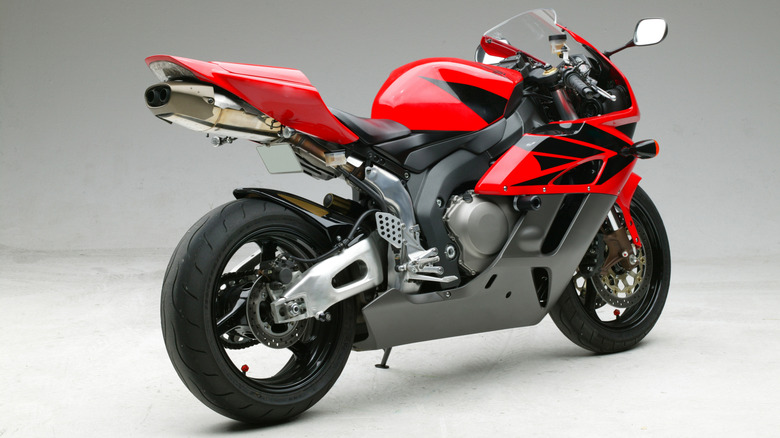What Does CBR Stand For On The Honda Motorcycle? The Answer May Be Complicated
Honda has been in the business of building motorbikes for decades, since 1949 to be precise. Over this time they have designed and manufactured a massive range of motorbikes, including the extensive CBR range. But just what does CBR stand for? This should be a simple question to answer. However, dig into the matter a little, and it soon becomes apparent that the answer is more complex than you may imagine. Since it was first introduced in 1983 on the CBR400F motorcycle, the CBR badge has featured in numerous of the company's motorcycles. The company itself has never provided a definitive meaning behind the acronym. And, although there are a couple of standout contenders for the title, there is still much debate within motorcycling circles about the true meaning of the letters.
This is quite a unique situation, most other such vehicle designations like GT (Grand Touring), TD (Turbo Diesel), and AWD (All Wheel Drive) are fairly well understood – or at least have known meanings. By contrast, the CBR badge is something of a "Curiously Branded Ride." Let's dig a little deeper into Honda's CBR motorcycle badge and see if we can establish whether CBR stands for City Bike Racer, Cross Beam Racer, or something completely different.
What's in a name--The CBR mystery
The internet is awash with theories and assertions about just what the CBR badge means. While there are some outliers like Cubic Bore Racing, Closed Body Racer, and lighthearted mentions on forums that say its true meaning is Can't Be Replaced — there are two realistic contenders as to the true meaning of CBR. One of the most commonly floated theories is that the CB stands for City Bike, and the R stands for Racer. The rationale behind this is that CB models are built for comfort rather than outright speed, therefore CBs are often used for commuting. Makes sense, right?
The other contender is the claim that CBR stands for Cross Beam Racer. This refers to the fact that the motorcycle's engine lies across its frame beams. A claim that apparently came from Dan Hancock, from Honda's R&D team. However, this information can't be verified, and Honda is reticent about giving away too much information on the matter. One member of a motorcycle forum who reached out to Honda directly received the rather dry response — "The letters rarely stand as abbreviations for specific words. It's an internal way for classifying models which possess certain features." As boring as this sounds, it may be the truth of the matter. How else would one of Honda's best motorcycles — the Fireblade SP — end up as the CBR 1000RR-R?
The rather bland truth
The sad truth is likely as noted in Honda's response to the forum member. The "C" designation has been used by Honda for decades, and CBR just seems to be a particular iteration of Honda's naming protocols. The company first introduced the "C" designation in 1957 with the Honda Dream C/CA/CS series. Since then, the "C" badge has been assigned to numerous motorcycles, and in no particular order. For instance, with the first iteration being C or CA it would make sense that the next one would be CB. And so it was, in 1958 Honda introduced the Honda Benly CB series. After this, the pattern gets lost with CDs and CLs introduced in 1965, before the company reverted to a C model in 1967 (after throwing in a CS model for good measure in the same year.) There does seem to be at least a little method in the madness, though.
For the most part, any Honda motorcycle with a badge starting with a C belongs to the "standard street motorcycles class." However, just to make sure we don't completely crack the code, this isn't always the case. For instance, the CR125M model from 1972 is classified as being for off-road and Motocross. Another example that bucks the naming trend is the 1977 CBX model, this bike was classified as a transcontinental sports tourer.
To sum up, there is no clear consensus as to what CBR means. The truth is likely that it means nothing. But then again, we Could Be Rambling.


